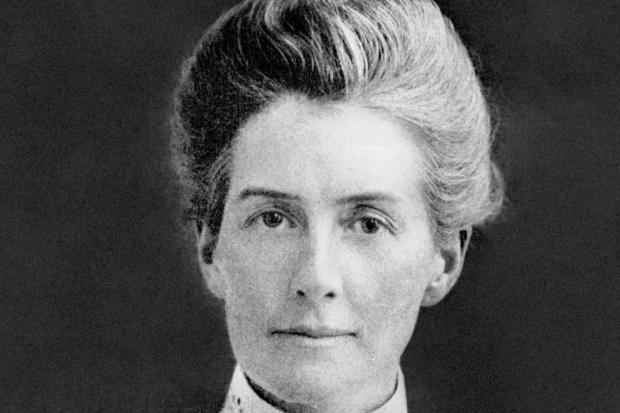Who was Edith Cavell? Google Doodle celebrates heroic World War One nurse
The nurse, who would have been 153 today, was arrested and charged with treason, and later executed by firing squad

GOOGLE is celebrating the birthday of nurse Edith Cavell who saved the lives of hundreds of soldiers in First World War.
Cavell, who would have been 153 today, risked her life to help Brit and French troops escape German-occupied Belgium at the start of the war.
Who was Edith Cavell?
Edith Cavell was born in Norfolk on December 4, 1865, and was inspired to become a nurse in her twenties when she cared for her dad after he was struck down by illness.
She trained under Matron Eva Luckes at what is now the Royal London Hospital in Whitechapel before working at hospitals in Kings Cross, Shoreditch, Manchester and Kent.
In 1907, she was invited to Brussels, where she had previously worked as a governess, to become the matron of a newly-established nursing school called L'École Belge d'Infirmières Diplômées.
She later founded the medical journal l’infirmière in 1910 and soon became a training nurse for three hospitals, 24 schools, and 13 kindergartens in Belgium.
What did she do in the First World War?
Cavell was visiting family in Norfolk at the outbreak of war and immediately returned to Brussels to treat war casualties of all nationalities at her hospital.
During her time as a nurse she became involved in an underground group that sheltered French and British soldiers in occupied Belgium, before helping them flee to the Netherlands and Britain.
Along with saving the lives of Allied soldiers, she also helped Belgian and French civilians escape.
By August 1915, she is believed to have helped around 200 men flee - but her actions broke German military law and she was arrested and charged with harbouring enemy soldiers.
She confessed during her court-martial and despite international pressure, backlash and mass appeals for mercy, she was executed by a German firing squad on October 12, 1915.
What happened after her execution?
Her death was met with widespread outrage and for years afterwards was used as anti-German propaganda by the British.
In Britain, she became a figure for military recruitment while her death was also used to help boost pro-Allied sentiment in the USA.
The German government justified the execution, saying they had acted fairly as she had committed treason against Germany by helping the enemy.
But in January the next year, Kaiser Wilhelm ruled that capital punishment could not be carried out on women without his express permission.
MORE GOOGLE DOODLES
What is a Google Doodle?
In 1998, the search engine founders Larry and Sergey drew a stick figure behind the second 'o' of Google as a message to show that they were out of office at the Burning Man festival and with that, Google Doodles were born.
The company decided that they should decorate the logo to mark cultural moments and it soon became clear that users really enjoyed the change to the Google homepage.
In that same year, a turkey was added to Thanksgiving and two pumpkins appeared as the 'o's for Halloween the following year.
Now, there is a full team of doodlers, illustrators, graphic designers, animators and classically trained artists who help create what you see on those days.
In September 2018 Google celebrated its 20th birthday with a Doodle.
Among the Doodles published in 2018 were ones commemorating cartographer Abraham Ortelius, Egyptian actor Omar Sharif and St Patrick's Day.
And of course there was a whole series for the football World Cup in Russia.
Earlier in the year, the search giant celebrated the Paralympics in 2018 in Pyeongchang with an animated design celebrating each of the sports the winter Paralympians competed in.
We pay for your stories! Do you have a story for The Sun Online news team? Email us at tips@the-sun.co.uk or call 0207 782 4368. You can WhatsApp us on 07810 791 502. We pay for videos too. Click here to upload yours.














